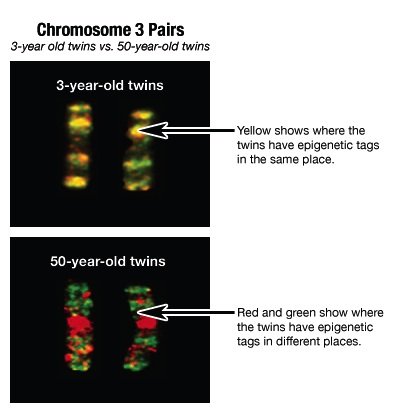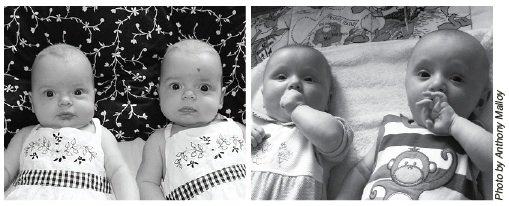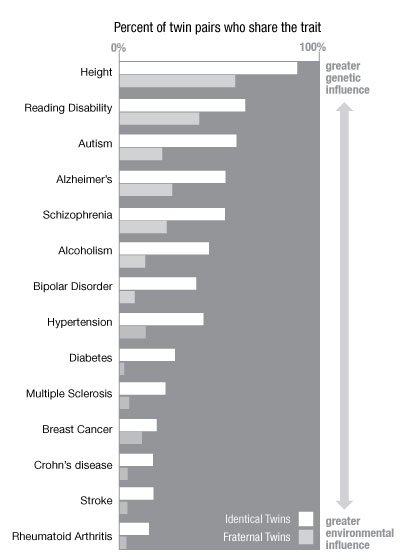Because identical twins develop from a single fertilized egg, they have the same genome. So any differences between twins are due to their environments, not genetics. Recent studies have shown that many environmentally induced differences are reflected in the epigenome.
Nature AND Nurture

Chromosome 3 pairs in each set of twins are digitally superimposed. One twin's epigenetic tags are dyed red and the other twin's tags are dyed green. When red and green overlap, that region shows up as yellow. The 50-year old twins have more epigenetic tags in different places than do 3-year-old twins.
The insight we gain from studying twins helps us to better understand how nature and nurture work together. For well over a century, researchers have compared characteristics in twins in an effort to determine the extent to which certain traits are inherited, like eye color, and which traits are learned from the environment, such as language. Typically taking place in the field of Behavioral Genetics, classical twin studies have identified a number of behavioral traits and diseases that are likely to have a genetic component, and others that are more strongly influenced by the environment.
Depending on the study and the particular trait of interest, data is collected and compared from identical or fraternal twins who have been raised together or apart. Finding similarities and differences between these sets of twins is the start to determining the degree to which nature and environment play a role in the trait of interest.

Twin studies have identified some traits that have a strong genetic component, including reading disabilities like dyslexia. Other traits, like arthritis, are more likely influenced by the environment.

